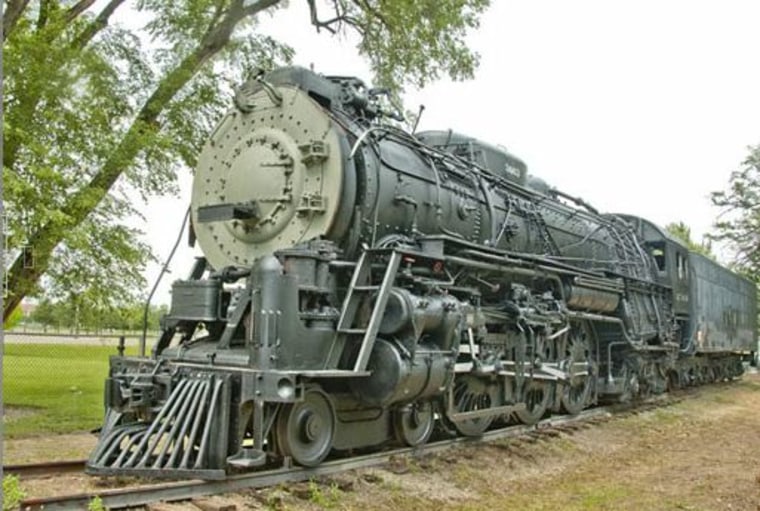A steam train built in 1937 is getting a makeover that will turn it into a “higher-speed” locomotive that runs on biocoal, a coal-like fuel made with woody plant material.
When finished, the train will be able chug along existing tracks at speeds up to 130 miles per hour without contributing to the greenhouse gas pollution blamed for global warming.
“Computer simulations already show that the locomotive is about as powerful as two modern passenger diesel locomotives,” Davidson Ward, president of the Coalition for Sustainable Rail, told me Thursday.
“But it will burn carbon neutral fuel.”
The biocoal is based on a so-called torrefaction process pioneered at the University of Minnesota in Duluth. To make it, woody material — in this case trees — are heated in the absence of oxygen. The resulting flaky matter is then rammed together under high pressure to create coal-like bricks.
Biocoal has the same energy density as regular coal, but is cleaner burning, and since trees (the fuel source) sequester carbon as they grow, the system is considered carbon neutral, according to Ward.
The heat used to process the fuel comes from biogas, which makes the process 94 to 96 percent thermally efficient, he said.
“So you actually do have something that is as close to carbon neutral as possible,” he noted.
The biocoal will be used to power a 1937 steam locomotive that is being upgraded with a more efficient fire box, boiler and other parts — though using the same design principles as a traditional steam locomotive.
“It is kind of like the windmill,” Ward said. “Windmills are very old inventions, but you can modernize it and make it more efficient and apply it today.”
With sufficient funding, the team expects their made-over train to light up the rails sometime in the next two to six years.
The train will be classified as "higher-speed," which means it can travel on the same rail network as Amtrak and freight trains.
Rails for high-speed trains, which go 150 to 220 miles per hour, require more specialized tracks.
Today, most higher-speed passenger trains are diesel-electric locomotives, which generate their peak horsepower at low speeds — about 25 miles per hour. Steam locomotives, by contrast, get their peak horsepower at higher speeds — about 40 miles per hour.
"Initial computer simulations suggest that the CSR's modern steam engine will significantly out-accelerate a modern diesel-electric locomotive to 110 mph," according to the coalition's website.
In addition to trains, the steam engine technology can be used to create “self-contained energy generation units” that could be shipped to the developing world, including the torrifier.
And since these units are based on age-old steam engine technology, they won’t require high-tech skills to perform routine maintenance or fix broken parts.
The train itself, which Ward’s organization acquired from a museum in Kansas, is considered a proof-principle project. If all goes according to plan, they might build a new steam locomotive from scratch, which will have some modern looks.
For example, “no cowcatcher,” Ward said. “You don’t need a cowcatcher today unless you are a 'Back to the Future' fan.”
— Via Clean Technica
John Roach is a contributing writer for msnbc.com. To learn more about him, check out his website and follow him on Twitter. For more of our Future of Technology series, watch the featured video below.
